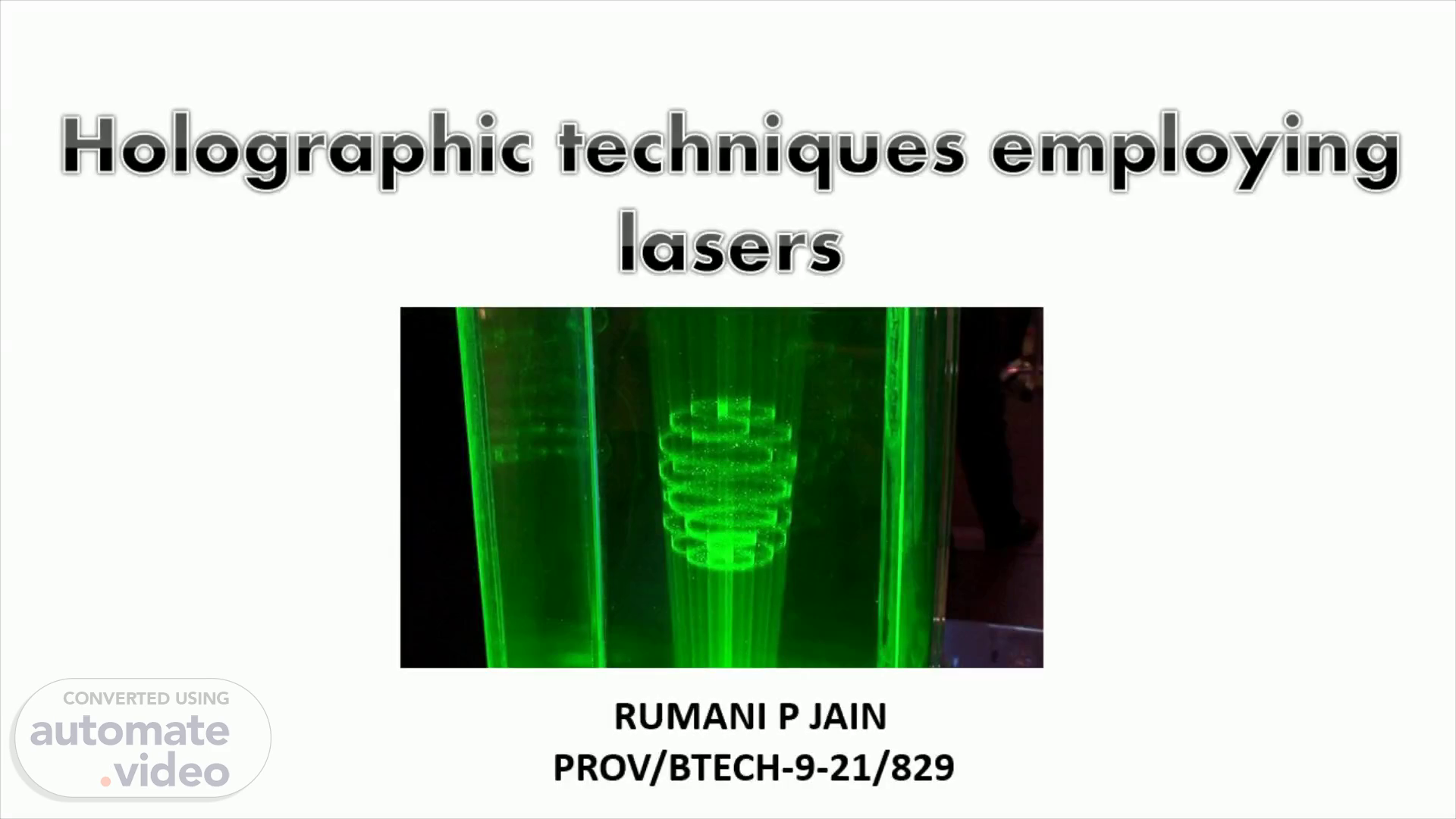
Holographic techniques employing lasers
Scene 1 (0s)
Holographic techniques employing lasers. RUMANI P JAIN PROV/BTECH-9-21/829.
Scene 2 (9s)
What are lasers?. It is a kind of device that activates atoms or molecules to emit light at particular wavelengths and amplifies that light, typically producing a very narrow beam off radiation ABSTRACT: Holography is the science of making holograms which are usually intended for displaying three-dimensional images. A holographic image can be seen looking into an illuminated holographic print by shining a laser through a hologram and projecting an image on the screen. The paper reviews the basic concepts of holography, discussing in-depth of the principle of interference on which it is based, and outlines the broad applications of holography. We finally present a short conclusion in the end after analyzing the various aspects of holography.
Scene 3 (39s)
Laser halographic techniques. Laser holographic techniques can be used to detect small deformations of three-dimensional objects, of the order of the wavelength of the laser light. We report the use of laser holography to measure the crustal deformation in a deep tunnel at Amagase , Kyoto, Japan. A recording system consisting of a helium–neon gas laser and associated optical elements was installed in the observation tunnel in 1984. Using this system , holograms of a section of the tunnel wall ∼2m in diameter are directly recorded on photographic plates. When the reconstructed image of a hologram is superposed on the current (‘real-time’) image of the tunnel wall, many interference fringes can be seen through the developed photographic plate ..
Scene 4 (1m 9s)
The fringe displacement, formed by the deformation of the tunnel, is continuously monitored with a video camera and a video-cassette recorder. The measured fringe displacement in the interference pattern is consistent with strain changes obtained from extensometers which have been installed in the same tunnel ..
Scene 5 (1m 24s)
BASIC OF HOLOGRAPHY A Hologram is a recording in a two- or three-dimensional medium of the interference pattern formed when a point source of light of fixed wavelength encounters light of the same fixed wavelength arriving from an object. Ordinary light is made up of many different wavelengths, none of which maintains a fixed phase relationship with each other or with themselves over a period of time. It has poor temporal coherence. Such incoherent light is not capable of interfering with itself, which is the most important for the application of holography. So lasers are used to produce light beams which are coherent over 10^10 wavelengths and more..
Scene 6 (1m 51s)
INTERFERENCE : It is a phenomenon in which two waves superpose to form a resultant wave of greater or lower amplitude. Interference usually refers to the waves that are coherent with each other. DIFFRACTION GRATING : The recorded light pattern is diffraction grating. When it is illuminated by only one of the waves used to create it, it can be shown that one of the diffracted waves emerges at the same angle at which the second wave has been reconstructed. Thus the recorded light pattern is a holographic recording. PHOTOGRAPHIC PLATE: Only records the intensities. INTERFERENCE PATTERN: Contains the phase information..
Scene 7 (2m 21s)
RECORDING A HOLOGRAM Coherent light from a laser is directed on a beam splitter. A beam-splitter divides the laser beam into two identical beams, which are aimed in two different directions. The two beams are an object beam and a reference beam. The object beam is reflected by the surface of the object onto the plate. The reference beam directly falls onto the plate. So the laser beams interfere with each other. A laser light hologram is recorded.
Scene 8 (2m 43s)
THANKYOU.